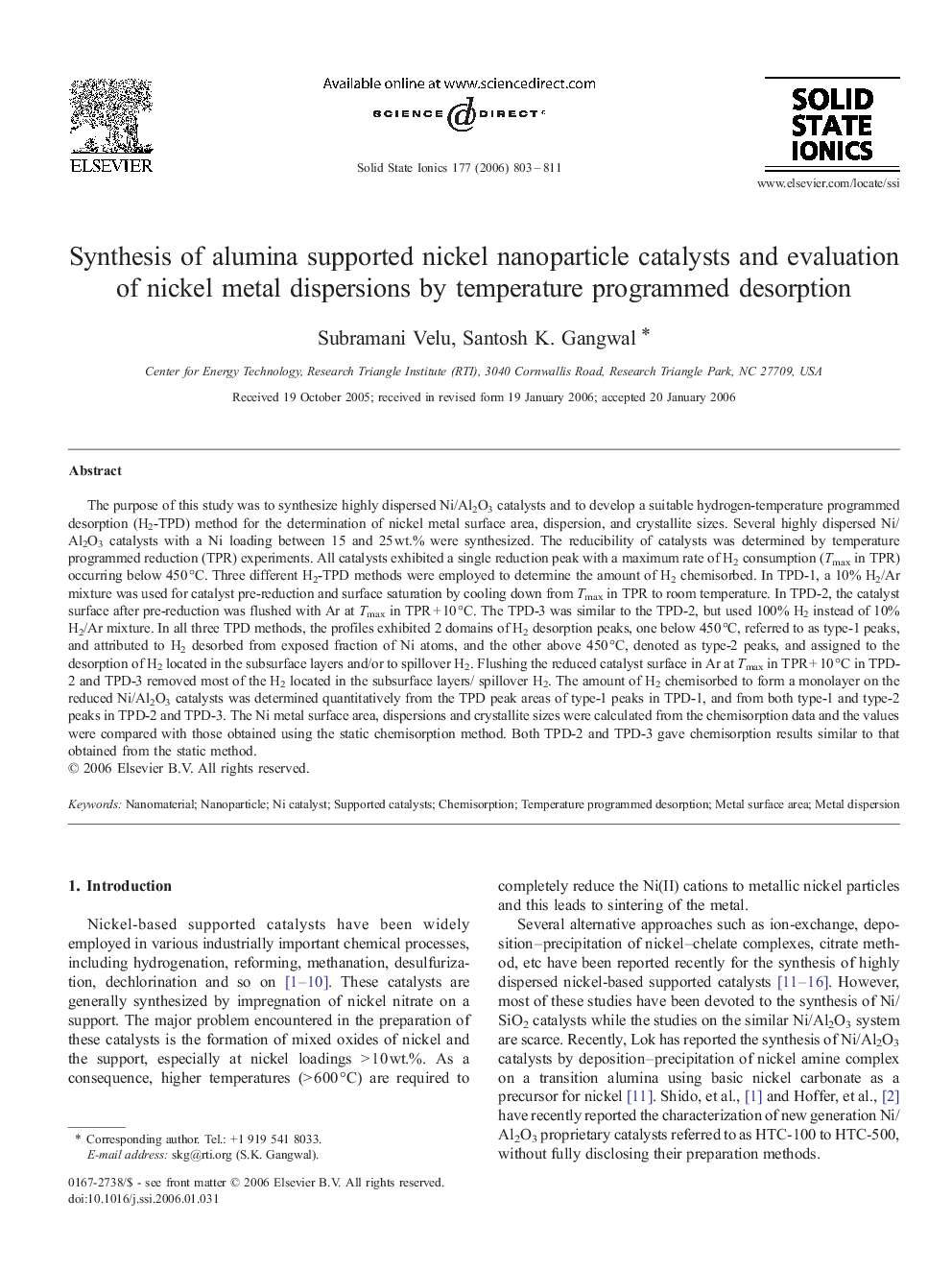| کد مقاله | کد نشریه | سال انتشار | مقاله انگلیسی | نسخه تمام متن |
|---|---|---|---|---|
| 1298990 | 1498409 | 2006 | 9 صفحه PDF | دانلود رایگان |
عنوان انگلیسی مقاله ISI
Synthesis of alumina supported nickel nanoparticle catalysts and evaluation of nickel metal dispersions by temperature programmed desorption
دانلود مقاله + سفارش ترجمه
دانلود مقاله ISI انگلیسی
رایگان برای ایرانیان
کلمات کلیدی
موضوعات مرتبط
مهندسی و علوم پایه
شیمی
الکتروشیمی
پیش نمایش صفحه اول مقاله

چکیده انگلیسی
The purpose of this study was to synthesize highly dispersed Ni/Al2O3 catalysts and to develop a suitable hydrogen-temperature programmed desorption (H2-TPD) method for the determination of nickel metal surface area, dispersion, and crystallite sizes. Several highly dispersed Ni/Al2O3 catalysts with a Ni loading between 15 and 25 wt.% were synthesized. The reducibility of catalysts was determined by temperature programmed reduction (TPR) experiments. All catalysts exhibited a single reduction peak with a maximum rate of H2 consumption (Tmax in TPR) occurring below 450 °C. Three different H2-TPD methods were employed to determine the amount of H2 chemisorbed. In TPD-1, a 10% H2/Ar mixture was used for catalyst pre-reduction and surface saturation by cooling down from Tmax in TPR to room temperature. In TPD-2, the catalyst surface after pre-reduction was flushed with Ar at Tmax in TPR + 10 °C. The TPD-3 was similar to the TPD-2, but used 100% H2 instead of 10% H2/Ar mixture. In all three TPD methods, the profiles exhibited 2 domains of H2 desorption peaks, one below 450 °C, referred to as type-1 peaks, and attributed to H2 desorbed from exposed fraction of Ni atoms, and the other above 450 °C, denoted as type-2 peaks, and assigned to the desorption of H2 located in the subsurface layers and/or to spillover H2. Flushing the reduced catalyst surface in Ar at Tmax in TPR + 10 °C in TPD-2 and TPD-3 removed most of the H2 located in the subsurface layers/ spillover H2. The amount of H2 chemisorbed to form a monolayer on the reduced Ni/Al2O3 catalysts was determined quantitatively from the TPD peak areas of type-1 peaks in TPD-1, and from both type-1 and type-2 peaks in TPD-2 and TPD-3. The Ni metal surface area, dispersions and crystallite sizes were calculated from the chemisorption data and the values were compared with those obtained using the static chemisorption method. Both TPD-2 and TPD-3 gave chemisorption results similar to that obtained from the static method.
ناشر
Database: Elsevier - ScienceDirect (ساینس دایرکت)
Journal: Solid State Ionics - Volume 177, Issues 7â8, 15 March 2006, Pages 803-811
Journal: Solid State Ionics - Volume 177, Issues 7â8, 15 March 2006, Pages 803-811
نویسندگان
Subramani Velu, Santosh K. Gangwal,